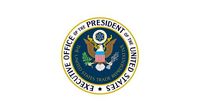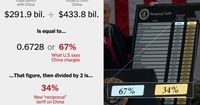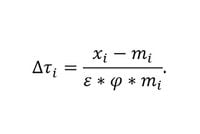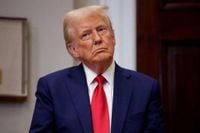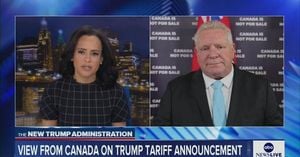On April 2, 2025, President Donald Trump signed a significant Executive Order that introduces a series of new tariffs aimed at reducing the United States' persistent trade deficit. This order, officially titled "Regulating Imports with a Reciprocal Tariff to Rectify Trade Practices that Contribute to Large and Persistent Annual United States Goods Trade Deficits," marks a crucial shift in U.S. trade policy, emphasizing a protectionist approach that the administration claims is necessary for the economic security of the nation.
The Executive Order establishes a base tariff of 10% on all imports to the U.S., with additional tariffs imposed on countries with which the U.S. has substantial trade deficits. These include China and Taiwan, both facing a hefty 32% tariff, followed by India at 26%, Japan at 24%, Vietnam at a staggering 46%, South Korea and the European Union at 20%, and the United Kingdom at 10%. Furthermore, a 25% tariff will be levied on imported automobiles.
Trump's administration argues that these tariffs are a necessary measure to correct what they describe as an unfair trade imbalance. "For too long, we have allowed countries with non-reciprocal trade agreements to benefit at the expense of American manufacturing. This ends today," Trump stated emphatically during the announcement.
Though the Executive Order does not explicitly mention Latin American countries, the base tariff of 10% could significantly impact key exporters like Mexico, Brazil, and Argentina, particularly in sectors such as automotive, manufacturing, and agriculture. The tariffs could lead to increased costs for these countries' products in the U.S. market.
In a fact sheet released by the White House, it was noted that "Argentina maintains restrictions on the import of remanufactured goods, limiting access to the Argentine market for U.S. products." The document also highlighted that if these barriers were lifted, U.S. exports could potentially increase by at least $18 billion annually. It pointed out that Argentina has banned the import of live cattle from the U.S. since 2002, a decision Washington considers unjustified. Currently, the U.S. faces a trade deficit of $223 million in beef and beef products with Argentina.
As the tariffs are set to take effect, beginning April 5, 2025, at 12:01 a.m. EDT for the base tariff, and targeted tariffs on April 9, 2025, many analysts are concerned about the potential international repercussions. Countries affected by these tariffs may seek bilateral negotiations to lessen their impact or retaliate with their own trade measures.
Trump's Executive Order allows for the modification of tariffs in the future, indicating that the U.S. may increase tariffs in response to restrictions imposed by affected countries on U.S. products. Conversely, if favorable trade agreements are reached, tariffs could be reduced.
According to the White House, the U.S. suffered a staggering $1.2 trillion trade deficit in 2024, largely attributed to countries like China, which accounted for $270 billion, and Mexico, at $160 billion. Other significant contributors to the deficit include Vietnam, Ireland, and Germany.
The administration's fact sheet criticized the high tariffs imposed by other nations, such as 60% on apples, 70% on passenger car imports, and 80% on rice husks, which they argue places American companies at a disadvantage. The U.S. imposes comparatively low tariffs, typically ranging from 2.5% to 3.3%, leading to a significant imbalance.
In addition, analysts warn that these new tariffs could trigger a global recession. A recent report from JP Morgan Research indicated that the risk of a global recession rose to 40% in early 2025, up from 30% at the start of the year, primarily due to the uncertainties surrounding the ongoing tariff war.
Trump's declaration of a national emergency under the International Emergency Economic Powers Act of 1977 allows him to enforce these tariffs as a means to address the trade deficit. The White House has stated that this move is intended to "strengthen the international economic position of the United States" and "protect American workers."
However, this aggressive stance has drawn criticism from various quarters. The Chinese Commerce Ministry labeled the tariffs as "typical unilateral bullying," urging the U.S. to retract its measures. European leaders echoed similar sentiments, with Italian Prime Minister Giorgia Meloni condemning the 20% tariffs on the EU, calling them "wrong," while Irish Taoiseach Micheál Martin described the decision as "extremely unsettling."
The Indian Commerce Ministry is currently analyzing the impact of the 26% reciprocal tariff, with officials indicating a mixed response, while Canadian Prime Minister Mark Carney vowed to respond decisively to the tariffs.
Analysts suggest that while Trump's administration believes these tariffs will protect American jobs and industries, the broader implications for the U.S. economy and global trade could be severe. The tariffs, described by some as a $660 billion tax on American consumers, may lead to increased prices and inflation, further compounding the risk of economic downturn.
As the world watches closely, the effectiveness of Trump's new tariff regime remains to be seen. Will it indeed bolster American manufacturing and reduce the trade deficit, or will it ignite a trade war that could have far-reaching consequences for the global economy? Only time will tell.
